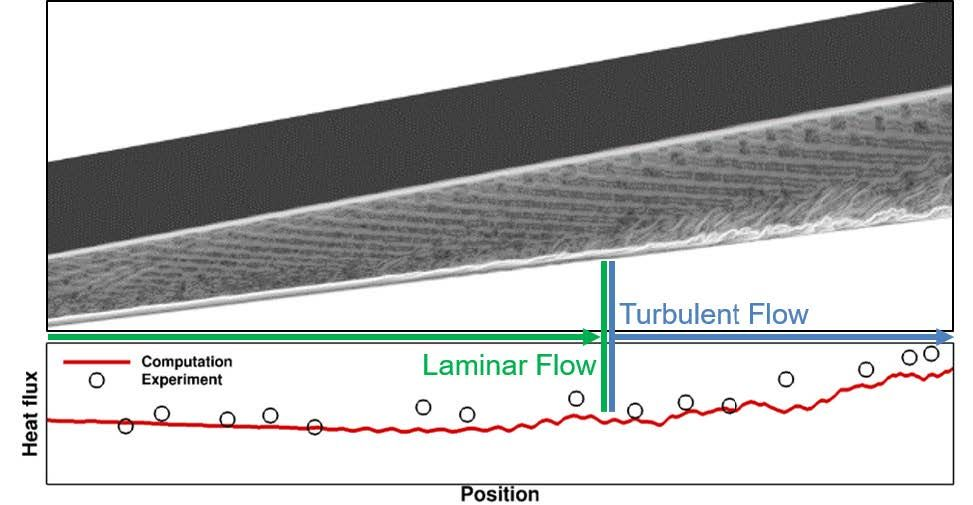Wind tunnels must be able to operate quietly in order to mimic the laminar-turbulent flow transition during flight. While quiet hypersonic wind tunnels that function above Mach 6 are not currently available, the United States Department of Defense requires them to support hypersonic development programs.
An HPCMP Frontier Project helped the Air Force Research Laboratory and the Office of Naval Research use direct numerical simulation to study the acoustic noise spectrum and laminar-turbulent flow in hypersonic tunnel tests. They successfully predicted transition location and heating rates for experiments carried out in an Arnold Engineering Development Complex tunnel at Mach 8.
Better understanding of the effect of wind tunnel noise on laminar-turbulent transition will make conventional hypersonic wind tunnels more useful. It would allow engineers to extrapolate test results to flight conditions and validate reduced-order vehicle models. The effect would be a substantial savings in cost and time for DoD hypersonic development programs.

